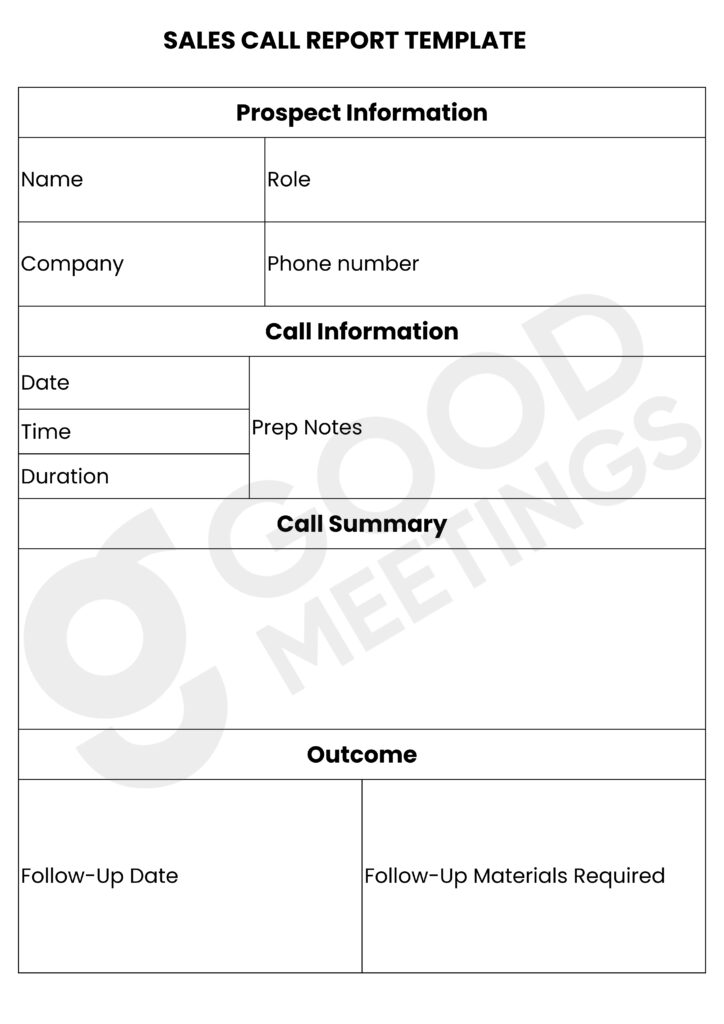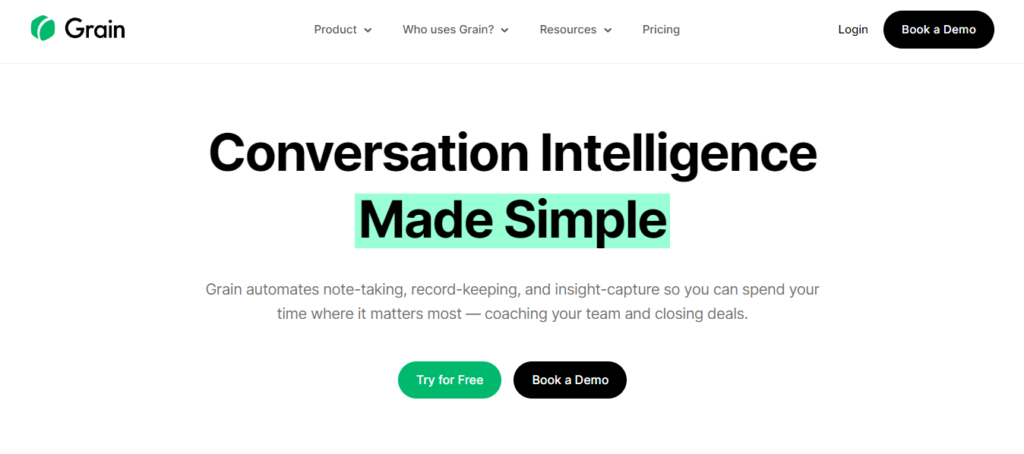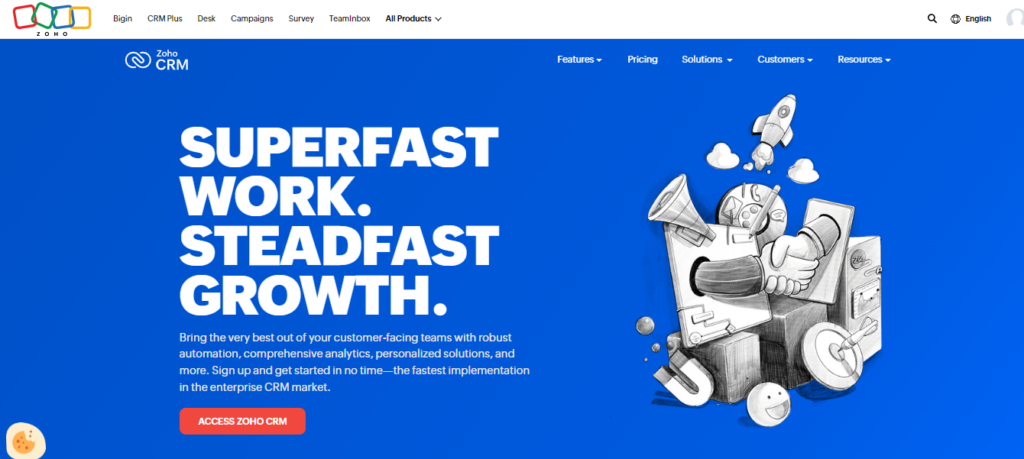Did you know that 80% of sales need at least five follow-up calls to seal the deal? This statistic underscores a simple truth: success in sales relies heavily on persistence and a smart follow-up strategy.
That’s where sales call reporting comes in. From pinpointing the perfect follow-up time to understanding the nuanced needs of your prospects, this process arms you with the knowledge to make each call more effective than the last.
In this guide, we’ll explain what sales call reporting is, discuss some of its benefits, and provide you with actionable templates and tools to help you get started.
So, whether you’re a seasoned sales veteran looking to sharpen your skills or a newcomer eager to hit the ground running, mastering the art of sales call reporting can dramatically boost your sales performance and conversions.
Let’s dive in!
What is Sales Call Reporting?
Sales call reporting is the process of recording and analyzing details from your sales calls. It involves tracking who you spoke to, what you discussed, and how the call went, then using that data to make future calls more successful.
However, sales call reporting goes deeper than logging call details — it also helps you understand patterns in your sales process.
For instance, you might notice that calls at a certain time of day lead to more positive outcomes, or that certain phrases seem to engage prospects better.
What’s more, it improves your sales efficiency, as you can easily identify which prospects are worth more follow-up and which are dead ends.
In essence, sales call reporting gives you a roadmap. It highlights what strategies work best, helping you refine your pitch, prepare better for future calls, and ultimately, close more deals.
6 Benefits of Sales Call Reporting
Understanding the impact of sales call reporting can be a game-changer for your sales strategy. Aside from tracking calls, this process unlocks a wealth of insights that can propel your sales team to new heights.
Here are some key benefits that illustrate why incorporating sales call reporting into your routine is essential for success:
- Improved follow-up strategy: Each sales call gives you a piece of the puzzle. By analyzing reports, you can tailor your follow-ups to address each prospect’s specific needs and concerns. This in turn will increase your chances of closing more deals.
- Enhanced sales training: Sales call reports highlight what’s working and what’s not across your team. This insight is invaluable for training new reps and refining the skills of your existing team to ensure everyone is on their most effective game.
- Better understanding of customer needs: Sales calls are rich with information about what customers want and how they think. Reporting helps you collect and analyze this data, so you can adjust your product or service offerings to better meet market demands.
- Insight into sales process efficiency: By tracking the length and outcome of calls, you get a clear picture of your sales process’s efficiency. This can lead to strategic changes that streamline your operations and improve your conversion rate.
- Data-driven decision-making: With solid data from call reports, making strategic sales decisions becomes more straightforward. You can identify trends, prepare for common objections, and focus your efforts on the most promising prospects.
- Increased accountability: Sales call reporting keeps reps accountable for their performance and follow-ups. It also allows managers to provide targeted support and recognition where it’s due.
Related: 10 B2B Sales Prospecting Tools in the Market
What to Include in a Sales Call Report
A well-crafted sales call report is a roadmap to understanding and improving your sales strategy.
Here’s a closer look at the essential elements to include for a detailed and actionable report:
1. Contact name, title, and company
This section records the essential information about the person you spoke with. It includes the name of the contact (the individual you communicated with), their job title, and the company they represent.
This information is crucial for personalizing follow-up communications and understanding the contact’s decision-making power within their organization.
2. Contact phone number/email
Having this ensures you can easily reach out for follow-up conversations, clarify any details, or provide additional information as necessary. It’s a basic but vital piece of information for maintaining contact.
3. Call objective
This section highlights why you’re making the call. Common call objectives might include introducing a new product, following up on a previous conversation, or addressing a specific concern the contact has expressed.
Related: 11 Effective Ways To Improve Sales Conversations & Drive More Revenue
4. Preparation notes
This should include insights gathered before the call, including background information on the contact or company, any previous interactions, and key points of interest or concern that might be relevant during the conversation.
5. Call summary
The call summary encapsulates the key points discussed during the call, including any responses or objections raised by the contact.
It also details the outcome of the call. Did the contact show interest? Was there any commitment made, or do they require further information?
Overall, capturing these details provides a clear picture of where each prospect stands in the sales funnel.
6. Call date, time, and duration
In this section, you’re to document when the call took place, how long it lasted, and at what time.
This information is useful for analyzing responsiveness and engagement levels, as well as for scheduling future communications at times that are most convenient for the contact.
7. Call analysis
Analyzing the call allows you to reflect on the call’s overall success, challenges encountered, and lessons learned. It can also help you refine your future sales strategies.
This part of your sales call report includes insights into the contact’s needs, preferences, or objections, as well as your own performance and areas for improvement.
8. Follow-up date
You should also specify when you plan to follow up with the contact. This keeps your sales process organized and ensures timely engagement, which is crucial for maintaining interest and momentum.
9. Materials needed for follow-up
List any materials you need to send as part of your follow-up, such as brochures, case studies, or price quotes.
Being well-prepared and having the right resources ready is crucial for success in the next stages of the sales process.
Related: 4 Ways To Measure and Improve Sales Effectiveness
Sales Call Reporting Templates
If you want to simplify your sales call reporting process, having standard templates can be extremely helpful.
This template will not only save your team time but also ensure consistency across all your sales call reports.
We’ve provided three free sales call report templates that you can get started with below:



hese templates are great but require a lot of manual work from the sales rep’s side to maintain and update. To ensure that sales reps are not wasting precious time doing manual tasks, use a call reporting software that actually helps with sales productivity and efficiency. Here are the top 4 sales reporting software:
4 Top Sales Call Reporting Software
Using the right tools is essential for efficient and effective sales call reporting. Let’s take a look at some types of tools that can elevate your reporting game:
1. Goodmeetings

This sales conversational intelligence software will make your sales call reporting process as seamless as ever.
Goodmeetings automatically transcribes your sales meetings to help you review customer interactions, uncover valuable insights, and improve team performance.
Here’s what you can do with Goodmeetings:
- Highlight important moments of your sales calls, so you can easily reference key points in your conversation.
- Get accurate transcripts and summaries that contain every detail of your calls.
- Access a complete picture of your customer, including their name, designation, and previous interactions with your business.
- Train your reps using AI-based nudges and battlecards or live human coaching.
- Leave feedback for your reps with comments.
- Automate your processes with its CRM integrations.
- Get deep call insights with powerful analytics.
- Improve your call follow-ups with automated action items.
GET IN TOUCH
Automate Your Reporting Process With Goodmeetings
Related: Getting Started with the Goodmeetings Notetaker
2. Grain

Grain simplifies sales call reporting by automating note-taking, record-keeping, and insight-capture. This platform also syncs notes seamlessly to CRM contact and deal records to aid effective follow-up.
3. Zoho CRM

4. Dialpad

Dialpad provides real-time, accurate transcriptions of calls and meetings. It can also automatically identify action items and generate post-call summaries with key information.
7 Sales Call Reporting Tips and Best Practices
To get the most out of your sales call reporting, it’s not just about what tools you use or what information you gather; it’s also about how well you use that information.
With that being said, here are some practical tips and best practices to keep in mind as you craft your sales call reports:
1. Be consistent
Consistency is key in sales call reporting. Use the same format and criteria for each report to ensure that the data collected is comparable across all calls and reps.
One way to maintain consistency in your reports is by establishing standard fields in your reports that cover all the essential information.
This uniformity allows for more reliable analysis and helps identify trends or issues quickly. Whether it’s the length of calls, the responses to certain pitches, or the number of follow-ups needed, consistent data is invaluable.
2. Keep it timely
To capture the most accurate account of the call, your reps should complete their reports right after their conversation while details are fresh in their mind.
This practice helps to prevent the omission of critical details that could be forgotten over time and ensures that the nuances of the conversation are captured, leading to more insightful data.
Timeliness also ensures that follow-ups are scheduled appropriately and that opportunities aren’t lost due to delays.
3. Focus more on key insights
Remember that now every detail of a conversation will be important. So, train your team to distill the most critical points: objections, questions, customer interests, and any expressed needs.
Highlighting these key insights will make it easier to review reports and make strategic decisions without getting bogged down by extraneous information.
4. Set clear objectives
Define clear objectives for each sales call to guide reporting efforts.
Whether it’s closing a deal, addressing customer concerns, or gathering feedback, having specific goals helps sales reps focus their efforts and ensures that reporting aligns with business priorities.
5. Provide adequate training and rresources
Equip your sales team with the training and resources they need to report effectively. This could include sessions on how to use CRM software, understanding and measuring KPIs, and effective communication skills for detailed reporting.
Continuous training ensures that your team remains proficient in reporting practices and can adapt to any new tools or metrics introduced.
Related: 20 Sales Productivity Tools To Boost Your Sales in 2024
6. Use technology for efficiency
Even though less than 40% of CRM customers have over 90% end-user adoption, the advantages of leveraging CRM tools in sales call reporting are undeniable
So, alongside your sales reporting software, you can also make use of CRM tools to automate workflows and reduce administrative overhead.
Doing this can pose many benefits to your business, as research shows that automation helps many companies increase their inbound calls and conversions by 45%.
7. Review regularly
Sales call reporting shouldn’t be viewed as a one-off task but rather as an integral part of the sales process. You need to treat it as a work in progress.
This means continuously reviewing and updating the reporting criteria as your products, services, and market evolve.
By doing this, you can ensure that your reporting remains relevant and effective.
Streamline Your Sales Call Reporting Using Goodmeetings
With over 50% of decision-makers preferring to be contacted over the phone, there’s no denying the immense potential that lies in every call.
And, by incorporating structured sales call reporting into your routine, implementing the tips outlined this blog, and using a tool like Goodmeetings, your team can effortlessly unlock this potential, turning every call into an opportunity for growth.
GET IN TOUCH





